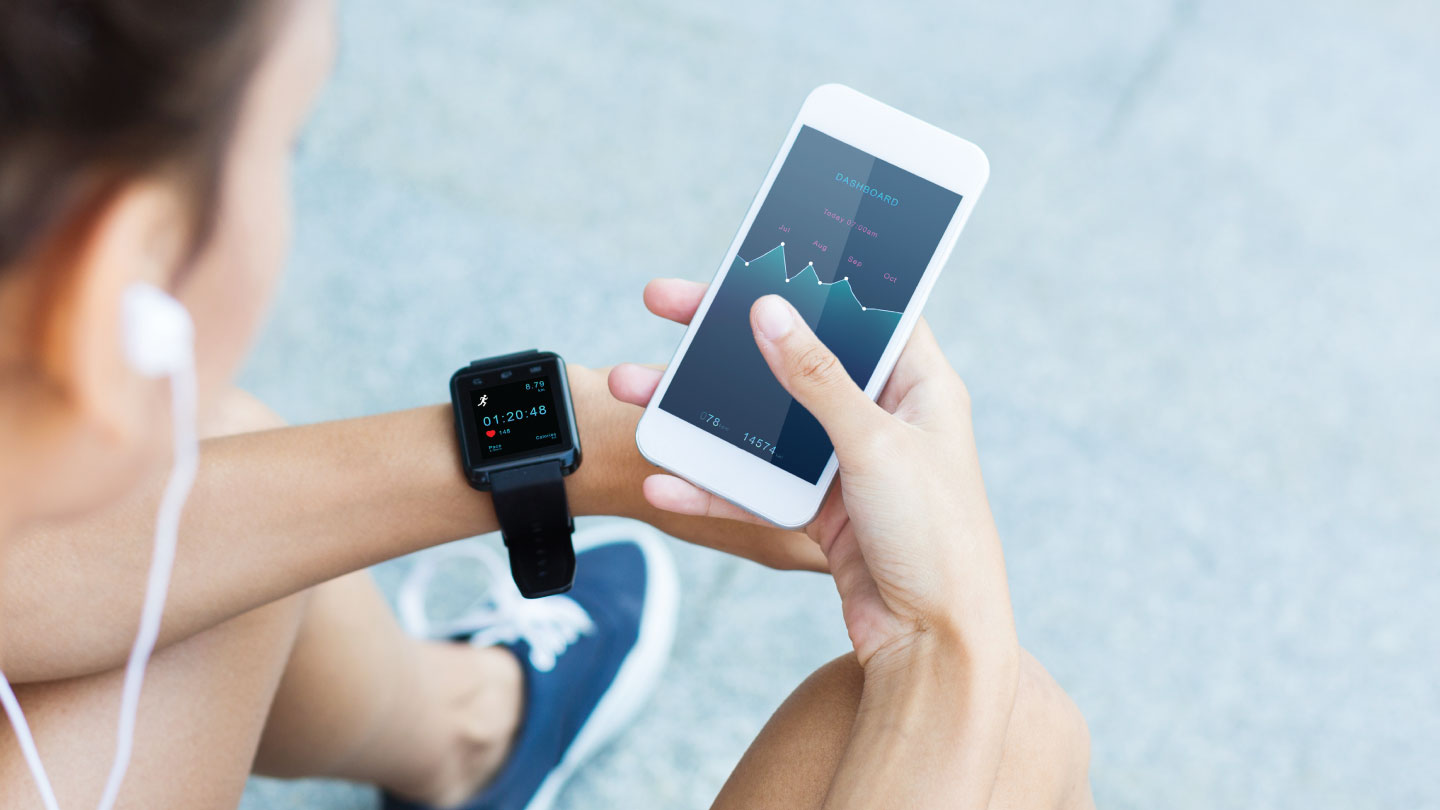Movement
Running for Weight Loss: Here’s What You Should Know
Running for weight loss is a smart approach to burning excess fat because you do not need any equipment. It all comes down to your will and a good pair of running shoes.

“There are clubs you can’t belong to, neighbourhoods you can’t live in, schools you can’t get into, but the roads are always open,” quotes Nike in one of its running campaigns.
Running for weight loss isn’t just beneficial for physical health, studies prove that it helps clear your mind, increase energy levels, and improve your mood. If you stick to it long enough, it may even help you burn fat and get stronger.
But before you read more, it is important to understand that fat burning isn't necessary or healthy for everyone. If you need rest post any kind of medical treatment or have any kind of eating disorder or have any internal or external injuries, you should consult your doctor/physician before begin running.
For everyone else, it’s essential to have a plan and stick to it in order to burn fat while running. “ Consistency is the key,” says Vinod Channa, a Mumbai-based celebrity fitness trainer.
For instance, 538 runners who ran 5k on an average in a week for the period of one-year reduced their weight by over 5 kgs in a year, notes a study published in The Journal of Sports Medicine and Physical Fitness, 2016. The participants also made changes in their diet to help achieve weight reduction, says the study.
Related story: How To Start Running--A Plan For Beginners
How Does High Intense Running Helps Burn Fat
You burn fat when your heart rate is 70 - 80 per cent of the maximum heart rate for your age and gender. To determine your maximum heart rate, you should subtract your age from 220. For example, if you are a 30-year-old, your maximum heart rate is 220 minus 30 — or 190 beats per minute. To enter the fat-burning zone, you would want your heart rate to be 70 per cent of 190, which is about 133 beats per minute.
“The intense work periods in a HIIT workout ranges from 5 seconds to 8 minutes long, and are performed at 80 per cent to 95 per cent of a person’s estimated maximal heart rate,” notes American College of Sports Medicine. When you run at higher intensities (as likely in HIIT), your body reaches the point called fat-burning heart rate zone – this is when your body begins to burn fat and uses stored fat for energy instead of energy from carbohydrates, resulting in more fat loss.
Why High Intense Running Helps Burn More Calories Post Exercise
HIIT workouts burn more fat because the body continues to burn more calories in the post-exercise period, known as EPOC (Excess Post-exercise Oxygen Consumption). This period is about 2-hours after an exercise is done and the body restores itself to pre-exercise levels, using more energy. “Because of the vigorous nature of HIIT workouts, the EPOC generally tends to be modestly greater, burning about 6 to 15 per cent more calories than when you run excluding the HIIT,” explains American College of Sports Medicine.
How Running Burns Fat
When you eat, the food is turned into energy; energy you do not use when you rest is stored in fat cells. The extra energy is stored in the form of triglycerides in adipose tissues in your body. When you do high-impact cardio activity such as running for weight loss for about 30 to 60 minutes, your body enters fat burning mode.
How Much Should You Run For Weight Loss
According to experts at Harvard, your jogging style, speed, and weight all have an impact on how many calories you burn in a given amount of time. For instance, experts at Harvard Publishing find that while a 57 kg person burns about 240 calories by running at an 8 km/h, a person weighing 84 kg burns about 336 calories running at the same pace for the same amount of time. The takeaway is that everyone is built differently, so how much fat you lose with running varies.
So, does running burn fat? Yes, it does. The World Health Organisation recommends about 150 to 300 minutes of activity a week for adults. Make sure to include running as a part of your weekly physical exercise time.
How To Run If You Are A Beginner
The first steps are the hardest, and mental conditioning plays a role. Besides basic fitness, you need no prior experience to start running. “But don’t do too much too soon. You should aim at a 10 per cent progression per week. It doesn’t matter if you run, jog or walk. You just have to finish your goal distance,” assures Running Mentor and Marathoner Coach, Ravinder Singh. Read more on starting running here.
Further, he recommends keeping some important points in mind such as the crucial role of hydration, avoiding running on empty stomach, wearing safe gear, choosing the right track (easy in the beginning), running in the right posture (looking straight ahead and not down), and importantly taking it slow.
“Run-walk method is a great way for new runners to get started and burn fat. Contrary to what people think, this method doesn’t imply walking when you’re tired, instead, you should walk when you are not,” says Vinod. In this method, you divide your run into periods of walking and running, with more time spent walking until you built stamina to sustain running for fixed periods of time. “Once you’ve built stamina, you can run nonstop for 30 minutes for three to four times a week to put your body in a high energy state, attain fat-burning heart rate and burn more fat,” explains Vinod.
For a more detailed plan for the first four weeks of your running, read coach Ravinder’s 3km Training Guide For Beginners.
Now, as you start to run and get more comfortable with running, you can work either on increasing distance or duration. For instance, move steadily from 30 minutes to 40 minutes. Try running for an hour once a week to check your endurance. Secondly, it is important to work on the intensity of the exercise at a steady rate. “A stepwise transition to running at a rate not exceeding 5-10 per cent of weekly mileage or duration is reasonable,” notes Journal of Injury, Function and Rehabilitation, 2013.
“Consistency is the key to running for weight loss. Make sure you run regularly over a long period of time to maintain your momentum and find a significant change in your body fat mass,” says Vinod.
Also, add in a couple of gym sessions in a week because going to the gym allows you to do more running and also burn more calories. Pre-emptive strengthening exercises such as resistance bands, push-ups, pull-ups, crunches, leg squats help you to improve your foot and ankle strength. “These exercises also strengthen the hip abductors, quadriceps, and trunk to support the joints bearing the loads to support your running program,” says Vinod.
Lastly, take a day off in a week. A rest day allows the body's muscles to recover from any damage they've sustained during workouts. “Most of the time, running causes microscopic tears in the muscles. Recovery day lessens the impact load on different parts of your body,” says Vinod.
Related Story: Five Ways To Level Up Your Running Game
Benefits Of Running For Weight Loss
1. Running builds muscles: Running for weight loss builds muscles and having more muscle means your body will burn more calories when you are at rest. In other words, having more muscle increases your everyday base metabolic rate, known as BMR. Studies find that a pound of muscle requires more energy per day to sustain than a pound of fat. So, the more muscle mass you have, the more calories you will burn.
2. Running reduces stress: There is a close relationship between your fat deposits and stress levels. Studies find that people who have higher cortisol levels have a higher chance of developing belly fat.
When you run, you also experience a runner’s high – a state when your body releases feel-good or happy hormones like endorphins and reduces stress hormones like cortisol.
3. Running burns calories: Running helps create a calorie deficit—it offers an opportunity to burn more calories than you consume. But, the number of calories you burn while running for weight loss varies largely depending on your body size, running speed, and the duration of run. However, many runners of average size estimate that they burn roughly 100 calories with every 1.5 km run.
Related Story: Post-Workout Snack: What To Eat After A Workout, A Sports Nutritionist Explains
Other Health Benefits Of Running
1. Running improves cardiovascular health: Running, even 5-10 minutes per day is associated with reduced risks of cardiovascular diseases, finds Journal of the American College of Cardiology, 2015.
2. Running boosts bone health: Long-distance runners have higher levels of bone formation markers, an important aspect of bone function, finds Journal of Exercise Rehabilitation, 2019.
3. Running controls hypertension: Running regularly at a moderate intensity helps lower resting blood pressure in persons with hypertension, notes Sports Medicine, 2020.
4. Running reduces the risk of incident of Type II diabetes: Runners have a 28 per cent lower risk of developing type II diabetes compared to non-runners, finds The American Journal of Medicine, 2019.
5. Running lowers the triglycerides, cholesterol: Archives of Internal Medicine finds a relationship between miles run per week and high-density lipoprotein cholesterol level. Participants who ran over 10 kms on an average in a week, had lower levels of bad cholesterol, said the study.
Related Story: Benefits of Running: 5 Ways A Run Improves Your Health
Running Vs Walking - Is Walking Better Than Running?
Both running and walking are great for health and well-being. What’s better over the other depends on a person’s choice, fitness and health goals. Running is a better option if you want to burn more calories or lose weight quickly because walking only burns about half as many calories as running.
However, in addition to many other advantages for your health, walking can also assist you in maintaining a healthy weight. Because running is a high-impact activity, you can initially start with walking and gradually increase mileage and speed.
Can Running Too Much Can Stop You From Burning Fat?
Too much cardio such as running creates a catabolic, muscle-wasting (thinning or loss of muscle tissue) environment in the body, which slows down metabolism.
Also, excessive amounts of cardio causes cortisol levels to rise resulting in more abdominal fat and other health issues.
So, start with one or two sessions per week, then add time to each session, get an extra interval or add an additional cardio workout if results start to slow. The key here is to listen to your body and its cues.
Ways To Use Running To Burn More Fat
The key to burning fat lies in intensity of exercise. “ Good cardio (for weight loss) is performed at higher-intensity, ‘stop and start’ interval-type training, which burns more fat and spares your hard-earned muscle at the same time,” says Vinod. Because cardio workouts typically top out at around 20 minutes in duration, it’s critical that you push yourself hard. “A short, low-intensity session such as, literally, a walk in your garden, does not burn any fat,” he adds.
Related story: Lactate Threshold: What Is It And Why Should You Care About It
Timing is important too. As opposed to doing the runs back-to-back — interval cardio training at its core means alternating between heart-pumping, fast runs and jogging or walking to provide temporary recovery before ramping the intensity back up again. “Do keep in mind that intense runs should be performed at 75 per cent of your full sprinting speed inorder to burn your fat,” says Vinod.
FAQs
Q: Should I eat after every run?
A: Yes, you should eat after every run. In fact, what you eat after a workout can help you reach your fitness goals—here are the best foods to have.
Q: What to eat after a run?
A: For intense workouts like long-distance running, a chicken or paneer wrap or sandwich or a vegetable-loaded egg omelette or a protein shake or a chicken or egg and avocado salad can be consumed.
Q: Can I do fewer runs and get results?
A: ‘Fewer’ is a subjective term. Listen to your body about how long and how much should you run. Number your runs as per your individual goals.
Q: Does the time of the day matter in running for weight loss?
A: Yes, it matters but the best time for you to run is when it’s most comfortable for you. Think of all the factors such as your daily routine, sleep pattern, job, leisure time, family, and eating times as these significantly impact the effectiveness of the runs.
Q: Does running burn belly fat?
A: Yes, running reduces visceral fat, including belly fat.
Q: Should you run before or after a workout to lose weight?
A: The answer depends on many variables such as what your overall fitness goals are, what you are looking to gain and how do you want to improve. You can adopt multiple approaches to losing weight and the right coach will help you with how to go about it, depending on factors such as body composition, and diet pattern.
EXPLORE MORE
Instead of chasing long workouts, micro-movement shifts the focus from “Did I work out today?” to “Did I move often enough today?”
Pressed for time but craving results? These high-impact exercises burn maximum calories in minimum time, when done right.
Simple, practical fitness advice to help you feel stronger, healthier, and more consistent in 2026.
Callisthenics isn’t about flashy Instagram moves or avoiding the gym. According to celebrity fitness and lifestyle coach Krishna Sadvale, it’s one of the most practical ways to build strength, control, and confidence in your own body.






.jpg)

.jpg)
.jpg)
